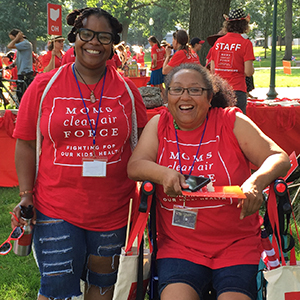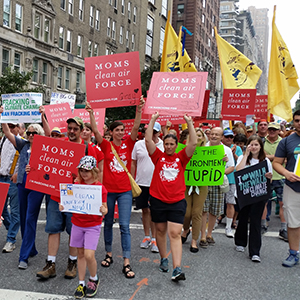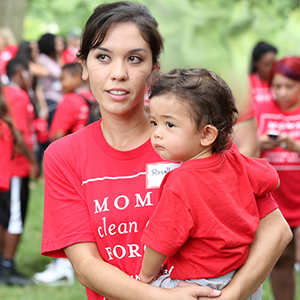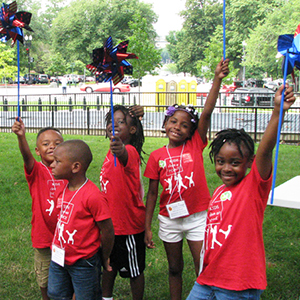
New research from the Environmental Voter Project highlights a striking trend: women make up nearly two-thirds of all climate-first voters. Dubbed the Green Gender Gap, this finding is at the heart of the organization’s latest report. The gap is especially pronounced among women aged 25–49 and 65-plus, groups more likely to have children in the home or be grandmothers, according to Census data.
In a recent webinar, climate leaders explored why women are more likely than men to prioritize climate action. The panel featured Moms’ Co-Founder and Director Dominique Browning, Dr. Ayana Elizabeth Johnson, marine biologist, writer, and policy expert, and Camila Thorndike, Climate Engagement Director for Harris for President and former climate, energy, and environment advisor for U.S. Senator Bernie Sanders.
Tell Administrator Zeldin: Cutting Climate Pollution Is One of EPA’s Most Important Jobs
The women shared insights from their unique and diverse perspectives in the climate space but kept returning to a unifying theme: love. Over and over in the conversation, love emerged as the driving force behind the Green Gender Gap and women’s leadership in the climate movement. It’s a force strong enough to drive change. Here are 5 reasons that love leads the way:
1. Women lead from the heart
Ayana, co-editor of All You Can Save, a best-selling anthology of essays written by 40 women leading on climate, reflected on a common thread that emerged when reading the stories in the book: the women led with cooperation rather than control.
“The writing of all these different women [gave] this sense of compassion, connection, creativity, and collaboration,” Ayana says. “This feminine leadership we were observing, which of course, anyone can exhibit these traits, but there’s a clear focus on making change as opposed to being in charge.”
2. Maternal love fuels climate commitments
When Dominique founded Moms Clean Air Force, she wanted to harness the “lioness love” emanating from the many mommy bloggers at the time who were focusing on keeping toxic products out of the home. She wanted to provide a way to activate that innate desire to keep our children safe.
“We really try to think about, ‘How can we get people in short bursts of activism?’ because it does matter,” Dominique says. “Every time you testify, your testimony goes into the record. Every phone call you make. Every petition you sign, it really matters.”
Ayana echoed this power of maternal emotion, sharing that love is the number one motivator for people to commit themselves to climate work, more powerful even than issues like green jobs or a stronger economy. “Love for future generations, in particular, is what gets us to do this tricky stuff that’s not something you can easily win and declare victory on,” Ayana says.
3. Moms are pragmatic warriors
Balancing careers, households, and caregiving, moms are efficiency experts. They’re motivated not just by love, but by the need to complete tasks. “The solutions are at hand. We know what to do. We just have to get it done. That’s kind of what our lives are like every single day. We just get stuff done by the end of the day and start again the next day. I really like that tension of being a pragmatic warrior motivated by love,” says Dominique.
This mindset translates well into climate action, where persistence and practicality are critical.
4. Love counters ego and greed
Camila blames ego and greed for the climate mess we’re in and says quiet persistence is the antidote. “The greed of the fossil fuel industry, the ego of people who want to put themselves in the limelight above future generations,” she explained, can be contrasted with the female climate activists who organize behind the scenes. “The people who get the most done are driven by love, not necessarily by credit or fame.”
5. Love is a catalyst for showing up
As the webinar conversation turned to action, the panelists encouraged the audience to let love inspire deeper engagement in 2025:
- Ayana urged civic action where you live: “Get involved locally. Your city and town councils are making a ton of decisions about how climate policy is implemented. And that’s a level of government at which you can be really influential because there’s just fewer people involved.”
- Dominique focused on federal accountability: “We are facing an EPA that is going to try to undo the Endangerment Finding, which is the foundation of all of its climate work. It really matters for everybody to tell EPA how against this you are.”
- Camila emphasized community over clicks: “Do not underestimate the radical value of showing up. And that includes getting off social media. Get in a relationship with the people in your community. We need to actually do the work, which is not clicking and sharing and liking so much as the messiness of human change, which means consistently showing up, even when it’s hard.”
Learn more about the Environmental Voter Project and watch the event in full:




